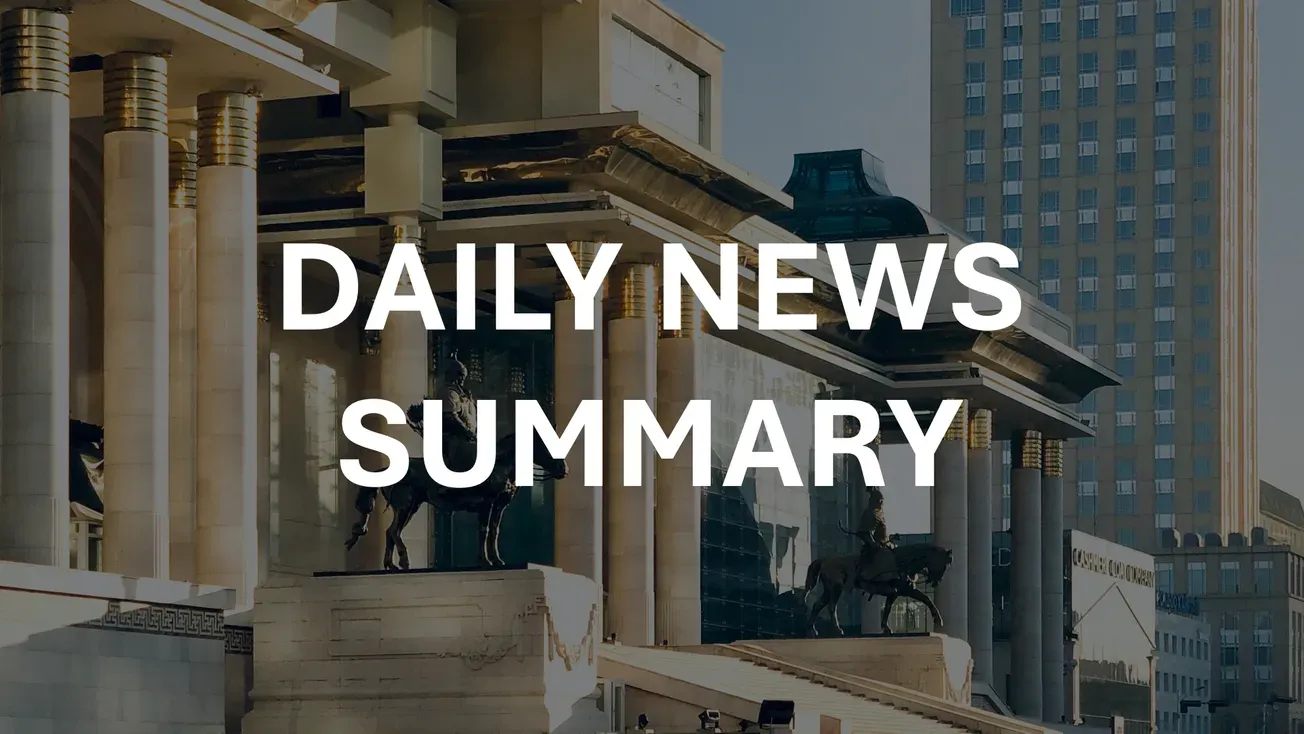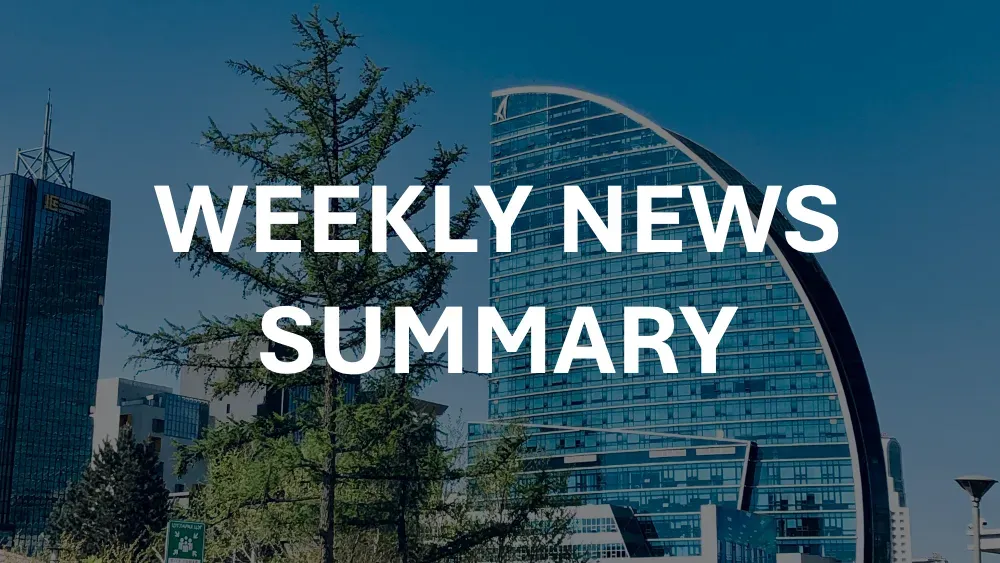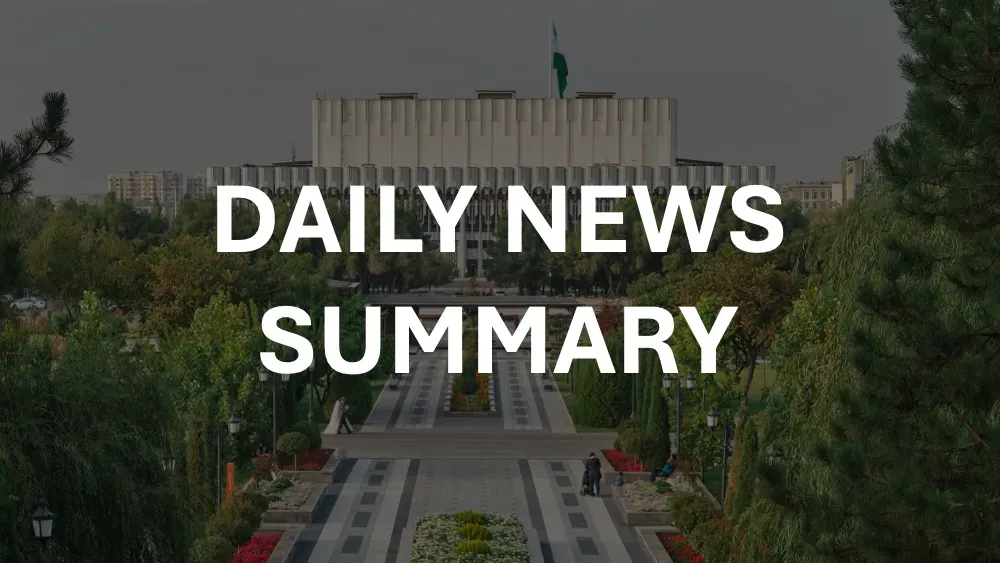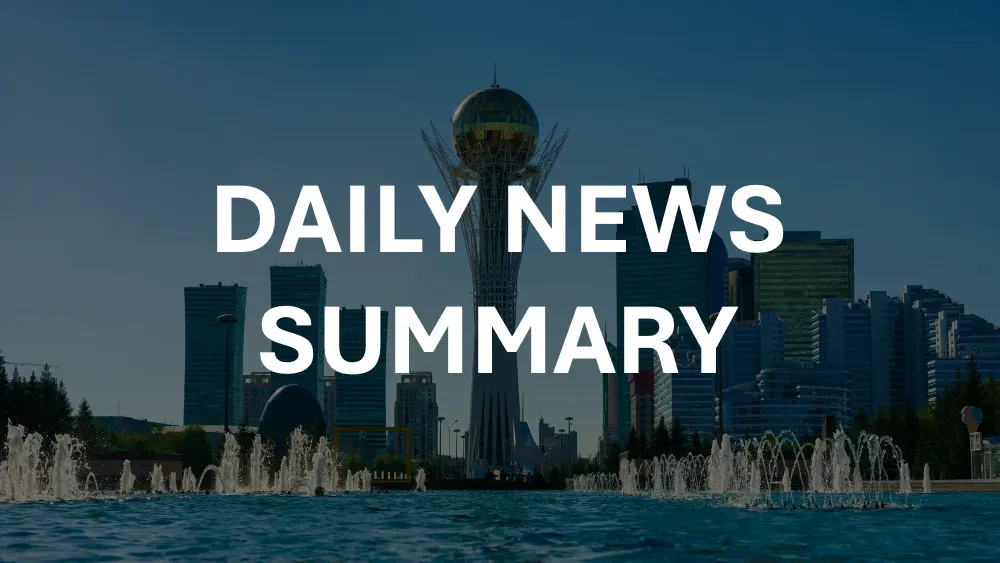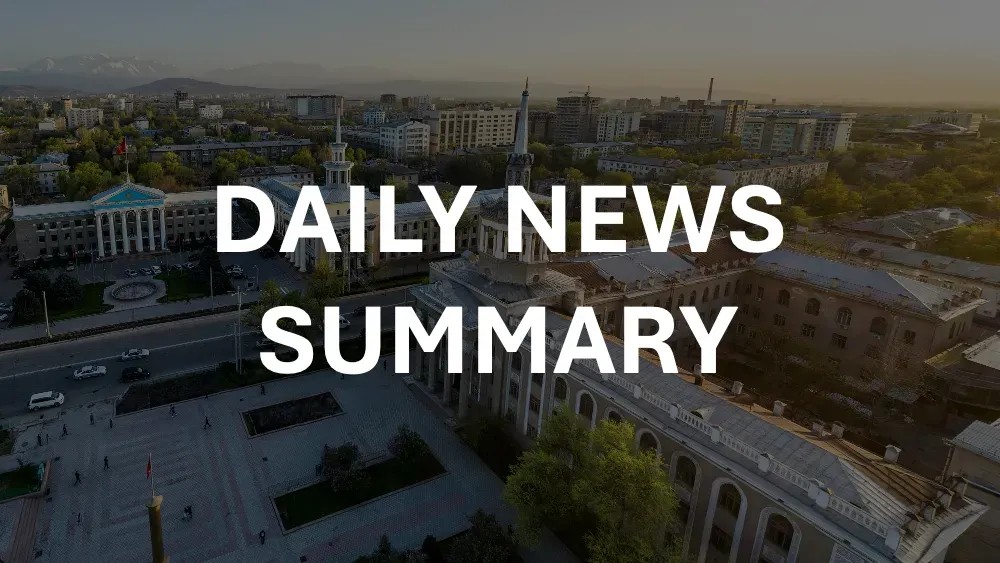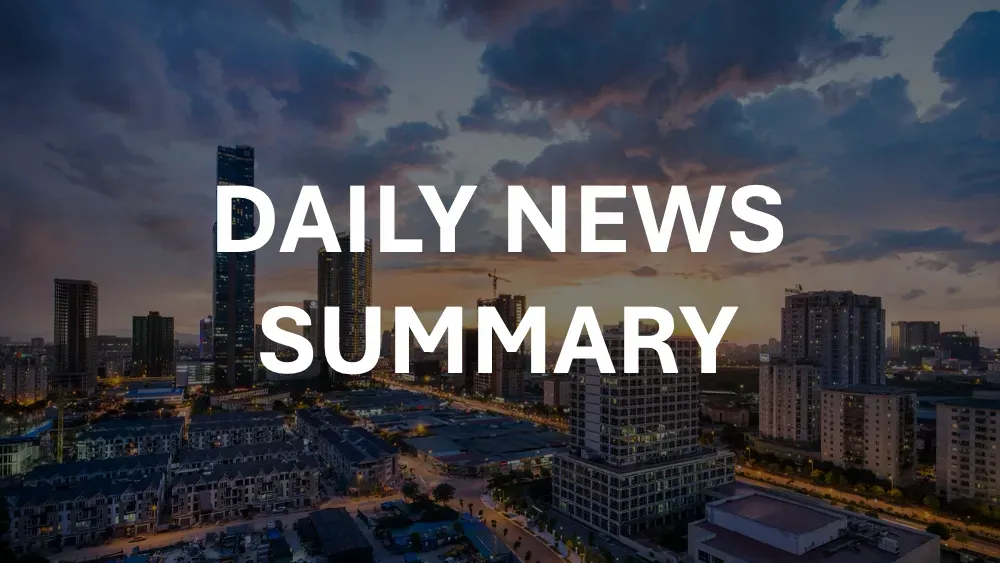📍 Get daily intelligence from Mongolia and Central Asia. Lexica News delivers local news that shapes global decisions—synthesized from local sources international media misses.
Ulaanbaatar's population explosion has fundamentally reshaped Mongolia's demographic landscape, with the capital now housing 1.7 million people compared to just 630,000 in 2001. This 170% increase over two decades represents one of Asia's most dramatic urban transformations, creating a metropolitan area that contains nearly half of Mongolia's 3.3 million population within just 0.3% of the nation's land area. The capital's 70% urbanization rate substantially exceeds Asia's 50% average, while 60% of city residents continue living in underserviced ger districts that lack basic infrastructure. This longitudinal analysis examines how Mongolia's post-socialist transition, mining boom, and climate pressures drove unprecedented urban concentration between 2000 and 2025, transforming economic patterns while straining housing, infrastructure, and environmental systems across multiple development phases.
Baseline Documentation: The Socialist Urban Legacy (2000-2005)
Ulaanbaatar entered the new millennium as a planned socialist city of approximately 850,000 residents, structured around centralized apartment blocks with comprehensive utilities in the urban core. The 1990 transition to democracy had eliminated state controls over population movement, initiating rural-to-urban migration that would accelerate throughout the following decades. Economic liberalization dismantled collective herding cooperatives, forcing pastoral families to seek opportunities in urban centers when traditional livelihoods became unsustainable.
The baseline urban structure featured distinct zones: a serviced central district with Soviet-era apartment buildings connected to heating, water, and sewage systems, surrounded by expanding ger settlements where rural migrants established traditional felt dwellings on the urban periphery. Government data from 2000 indicated that Mongolia's urban population had reached 57% of the total population, with Ulaanbaatar accounting for approximately 60% of urban residents.
Infrastructure capacity reflected socialist planning assumptions about controlled population growth. The central heating system, designed for apartment buildings, could not extend to dispersed ger settlements. Water and sewage networks served only the apartment districts, while ger areas relied on wells and pit latrines. Transportation infrastructure focused on connecting the city center to industrial zones rather than accommodating sprawling residential areas.
The early 2000s established migration patterns that would persist for decades. Rural families affected by harsh winters began settling in ger districts during particularly severe dzud years, creating temporary settlements that gradually became permanent communities. These areas lacked formal planning or municipal services, setting the foundation for the infrastructure deficits that would characterize later urban expansion.
Evolution Analysis: The Mining Boom Acceleration (2005-2015)
Mongolia's mineral wealth discovery transformed Ulaanbaatar from a regional administrative center into a resource economy hub between 2005 and 2015. Copper and gold mining developments, particularly the Oyu Tolgoi project, attracted international investment and created employment opportunities that drew rural populations to the capital at unprecedented rates.
Urban population growth averaged 4.1% annually during this period, with Ulaanbaatar's population increasing from approximately 850,000 in 2005 to over 1.3 million by 2015. This expansion primarily occurred in ger districts, which absorbed the majority of new residents while formal housing construction lagged significantly behind demand.
The mining boom created economic incentives that accelerated urbanization beyond infrastructure capacity. Rising incomes from resource extraction enabled families to relocate to the capital seeking better education, healthcare, and employment opportunities. However, formal housing markets could not accommodate the influx, forcing newcomers into ger settlements where land was available but services were absent.
Construction data reveals the scale of housing shortfalls during this period. Between 2010 and 2016, construction began on 7,374 apartments across Ulaanbaatar but only 3,516 were completed, according to municipal planning documents. This completion rate of less than 50% occurred while the city's population continued growing at rates exceeding 4% annually.
Climate pressures compounded migration flows during particularly harsh winters. Severe dzud events in 2009-2010 and 2015-2016 forced thousands of herding families to abandon rural livelihoods permanently, contributing to migration waves that overwhelmed urban planning capacity. These climate-driven migrations often led to permanent settlement rather than temporary displacement.
Infrastructure strain became visible across multiple systems. The city's water supply, designed for a population under one million, struggled to serve expanding ger districts. Air pollution from coal-burning stoves in unheated ger dwellings reached hazardous levels during winter months, while traffic congestion increased as the urban area sprawled beyond public transportation networks.
Middle Period Development: Institutional Responses (2015-2020)
Recognition of urbanization challenges prompted significant policy responses between 2015 and 2020, as Mongolia's government and international partners initiated comprehensive urban development programs. The Ulaanbaatar 2020 Master Plan acknowledged the scale of ger district expansion and proposed systematic approaches to infrastructure delivery and housing development.
Population growth rates moderated during this period but remained substantial. Annual growth declined to approximately 2.7% by the late 2010s, representing a deceleration from the previous decade while still adding tens of thousands of residents annually. The city's population reached approximately 1.5 million by 2020, with over 60% residing in ger districts that continued expanding faster than infrastructure development.
Major infrastructure investments began addressing longstanding service gaps. The Ulaanbaatar Clean Air Project (2012-2023) distributed 40,813 clean heating stoves, retrofitted 30 schools and 27 apartment buildings, and insulated 1,768 houses to improve air quality. The Third Sustainable Livelihoods Project provided $276 million for local infrastructure investments, benefiting 320,000 rural residents and potentially reducing migration pressures.
Housing policy responses included ambitious construction targets. Government programs aimed to deliver 130,000 housing units through ger area redevelopment and new area development, though implementation faced significant financing and coordination challenges. The Asian Development Bank supported affordable housing initiatives designed to provide 10,000 green housing units while redeveloping 100 hectares of ger areas into eco-districts.
Zoning strategies emerged to manage ger district development systematically. The Citywide Ger Area Upgrading Strategy classified ger areas into central, middle, and peri-urban zones, enabling targeted interventions based on location characteristics and infrastructure feasibility. Central zones received priority for utilities connection, middle zones focused on community facilities, and peri-urban areas emphasized environmental protection.
Economic pressures during this period included the 2016 balance of payments crisis, which constrained government infrastructure spending while migration continued. IMF stabilization programs required fiscal consolidation that limited public investment capacity precisely when urbanization pressures demanded expanded infrastructure delivery.
Recent Dynamics: COVID Impact and Recovery Planning (2020-2025)
The COVID-19 pandemic created new urbanization pressures while exposing the vulnerabilities of informal settlements in Ulaanbaatar. Population growth continued at approximately 1.5-1.7% annually, bringing the city's population to an estimated 1.7 million by 2025, though migration patterns shifted as economic opportunities fluctuated.
Housing markets experienced significant volatility during this period. Apartment prices fell 0.5% in 2019 and 0.2% in 2020, reflecting economic uncertainty, before recovering with a 2.7% increase in 2021. By 2023-2024, residential property prices surged dramatically: new apartments rose 15.2% in 2023 and 15.7% in 2024, while old apartments increased 10.5% and 18.7% respectively, indicating acute housing demand pressures.
Infrastructure investment accelerated as international financing became available for urban development projects. The World Bank's portfolio in Mongolia reached $396.9 million by March 2025, with significant allocations for urban sector development and climate resilience. The FY21-25 Country Partnership Framework emphasized sustainable urban recovery and job creation.
Air quality improvements demonstrated measurable progress from sustained infrastructure investment. The completion of the Ulaanbaatar Clean Air Project in 2023 achieved concrete outcomes in reducing pollution from ger district heating, though winter air quality remained problematic in areas without clean heating access.
Planning horizons extended with the development of the Ulaanbaatar 2040 Master Plan, which proposes satellite city development to relieve pressure on the capital. The Hunnu City project, located 52 kilometers from Ulaanbaatar near Chinggis Khaan International Airport, represents an attempt to decentralize growth through planned urban expansion connected by expressway.
Regional economic recovery influenced migration patterns as mining sector expansion at Oyu Tolgoi and agricultural sector recovery created employment opportunities both in Ulaanbaatar and rural areas. GDP growth acceleration to 6.3% projected for 2025 may influence future migration flows depending on where employment opportunities emerge.
Pattern Analysis: Systematic Drivers and Recurring Cycles
Twenty-five years of urbanization data reveal consistent patterns linking economic cycles, climate events, and policy responses to migration flows and urban expansion in Ulaanbaatar. Economic opportunities consistently drive voluntary migration, while climate shocks force involuntary displacement that often becomes permanent urban settlement.
Mining sector development cycles correlate strongly with urban population growth acceleration. The 2005-2015 mineral commodity boom period coincided with the highest sustained population growth rates exceeding 4% annually. Subsequent market volatility and the 2016 economic crisis reduced but did not eliminate migration, as urban opportunities remained more attractive than rural alternatives even during downturns.
Climate variability creates predictable migration pulses that compound underlying economic trends. Severe dzud winters in 2009-2010, 2015-2016, and 2023-2024 each generated noticeable increases in rural-to-urban migration. These climate-driven movements typically involve entire families relocating permanently rather than temporary displacement, contributing to permanent urban population growth.
Infrastructure delivery patterns show consistent lags behind population growth, creating cumulative deficits that become progressively more expensive to address. Construction completion rates averaging 50% during high-growth periods indicate systemic capacity constraints in Mongolia's construction sector, while utilities extension requires substantial upfront investment that often comes years after settlement establishment.
Policy implementation cycles demonstrate improved coordination over time but persistent challenges in execution. The 2015-2020 period showed enhanced multi-donor coordination and strategic planning compared to earlier ad hoc responses, yet government programs aimed at delivering 130,000 housing units have struggled with financing mechanisms and implementation capacity.
Spatial expansion patterns follow topographical constraints and transportation networks, with ger districts expanding primarily up hillsides and valleys surrounding the central city. This expansion pattern creates service delivery challenges as infrastructure must traverse difficult terrain, increasing per-unit costs for utilities extension and public service delivery.
Economic concentration in Ulaanbaatar reinforces continued migration despite infrastructure constraints. The capital's 63% share of national GDP and concentration of educational and healthcare facilities create persistent attraction factors that outweigh the costs of informal settlement in ger districts for many rural families.
Current Trajectory: Stabilization and Strategic Planning (2025-Present)
Recent indicators suggest urbanization patterns may be stabilizing around new equilibrium levels while institutional capacity for managing urban growth has strengthened significantly. Population growth rates have moderated to 1.5-1.7% annually, representing a sustainable pace if accompanied by adequate infrastructure investment and housing supply responses.
Economic projections indicate continued but managed growth pressures. IMF forecasts show GDP growth of 6.3% for 2025 and 5.2% average through 2026-2027, driven by mining expansion and agricultural recovery. This growth trajectory suggests continued urban employment opportunities without the dramatic economic volatility that characterized earlier periods.
Infrastructure planning demonstrates enhanced long-term perspective and coordination mechanisms. The World Bank's "Reimagining Gers" report from 2024 provides detailed frameworks for transforming ger districts into sustainable neighborhoods through improved infrastructure, higher-density development, and enhanced governance systems.
Financing mechanisms show diversification beyond traditional government budgets and donor funding. Public-private partnership approaches for housing and infrastructure development offer potential for scaling investment beyond public sector capacity, while land value capture mechanisms could fund infrastructure improvements through beneficiary contributions.
Air quality monitoring reveals measurable improvements from sustained investment in clean heating technologies and building retrofits. However, winter pollution levels in ger districts without clean heating access continue posing health risks, indicating substantial work remains in extending infrastructure improvements throughout informal settlements.
Regional development initiatives may influence future migration patterns through economic diversification. If satellite cities like Hunnu City successfully attract businesses and residents, they could reduce pressure on Ulaanbaatar's infrastructure while providing urban opportunities closer to rural areas.
Conclusion: From Crisis Management to Strategic Urban Development
Ulaanbaatar's transformation from a planned city of 630,000 in 2001 to a sprawling metropolis of 1.7 million in 2025 illustrates how rapid economic transition can overwhelm urban planning capacity while creating both opportunities and challenges for national development. The city's experience demonstrates that uncontrolled urbanization driven by economic and climate pressures can create lasting infrastructure deficits that require decades and billions of dollars to address systematically.
Key patterns emerge from this 25-year analysis. Economic opportunities consistently drive voluntary migration flows, with mining sector expansion creating the strongest pull factors for rural-to-urban movement. Climate variability generates additional migration pressure during severe winters, often converting temporary displacement into permanent urban settlement. Infrastructure delivery repeatedly lagged behind population growth, creating cumulative service gaps that became progressively more expensive to address as settlements expanded and consolidated.
Three distinct phases characterize this urbanization process: initial post-socialist transition (2000-2005) with limited planning capacity, mining boom acceleration (2005-2015) that overwhelmed existing systems, and institutional response development (2015-2025) that enhanced coordination and strategic planning. Each phase created different challenges and opportunities for managing urban growth while building institutional capacity for future development.
Current trajectory indicators suggest Mongolia has developed more sophisticated approaches to urban management while economic growth patterns have stabilized at sustainable levels. However, approximately 60% of Ulaanbaatar residents continue living in ger districts with inadequate infrastructure, indicating substantial work remains in extending basic services throughout the metropolitan area.
The data reveals ongoing monitoring priorities for stakeholders tracking urban development progress. Housing affordability trends, infrastructure investment execution rates, air quality improvements in ger districts, and satellite city development success will indicate whether Mongolia can transition from crisis management to sustainable urban development over the coming decade.
Frequently Asked Questions
How reliable is Ulaanbaatar's urbanization data across different time periods?
Population statistics show varying reliability across the 25-year period, with recent estimates more accurate than earlier data. UN demographic data and World Bank statistics provide consistent methodology for recent years, while early 2000s figures rely on census data with potential undercounting in informal settlements. Migration pattern analysis requires combining multiple sources including municipal registration, utility connection data, and household surveys to estimate actual population distribution.
What factors caused the biggest changes in Ulaanbaatar's growth patterns?
Mining sector development created the strongest sustained pull factors, with the 2005-2015 mineral commodity boom correlating with peak population growth rates exceeding 4% annually. Climate events like severe dzud winters generated periodic migration pulses, while policy changes including the 1990 democratic transition and economic liberalization eliminated constraints on population movement. International commodity price cycles influenced employment opportunities and migration decisions throughout the period.
How does Ulaanbaatar's urbanization compare to regional patterns?
Mongolia's 70% urbanization rate substantially exceeds the 50% Asian average, while concentration in a single capital city surpasses most regional patterns. Unlike diversified urban systems in neighboring countries, Mongolia channels most urban growth into Ulaanbaatar, creating exceptional infrastructure pressure. Regional comparison shows Mongolia's urbanization rate similar to developed economies despite lower per capita income levels.
What methodology changes affect long-term urbanization data comparability?
Census methodology evolved significantly between 2000 and 2025, with improved informal settlement enumeration and updated urban boundary definitions affecting trend analysis. Statistical office classification changes for ger districts sometimes shifted residents between urban and rural categories without actual population movement. Infrastructure coverage surveys provide additional verification for population estimates but use different sampling approaches across time periods.
What external factors correlate most strongly with urbanization changes?
International mineral prices show the strongest correlation with voluntary migration patterns, while winter severity indexes correlate with involuntary displacement. Mining sector employment data and commodity export values predict population growth acceleration with 6-12 month lags. Climate variables including winter temperature extremes and livestock mortality rates identify periods of increased rural-to-urban migration.
How do infrastructure investment cycles relate to population growth timing?
Infrastructure delivery consistently lagged population growth by 3-7 years throughout the period, with construction completion rates averaging 50% during peak growth phases. Utilities extension required substantial upfront investment that often came years after settlement establishment, creating service gaps that persisted for decades. International financing cycles influenced infrastructure investment timing, with World Bank and ADB project approval processes creating additional delays between identified needs and service delivery.
What upcoming developments could significantly alter current urbanization trends?
The Hunnu City satellite development 52 kilometers from Ulaanbaatar could redirect growth patterns if successfully implemented. Mining sector expansion at Oyu Tolgoi may generate new employment-driven migration, while climate change impacts on pastoral systems could intensify rural displacement pressures beyond historical patterns.



